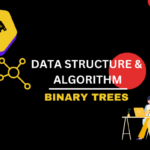Index
What is OOP ?
OOP stands for Object-Oriented Programming, and C++ is a programming language that fully supports this paradigm. In OOP, the focus is on creating objects that contain both data and functions to manipulate that data.Object-
Oriented Programming (OOP) offers several advantages, making it a popular paradigm for software development.
Object-Oriented Programming (OOP) offers efficiencies in execution, provides a coherent program structure, and ensures code maintainability and modifiability. By adhering to the “Don’t Repeat Yourself” (DRY) principle, OOP streamlines development, debugging, and maintenance processes. Additionally, OOP facilitates the creation of reusable applications with reduced code and shorter development cycles.
What are Classes and Objects ?
Classes and objects are fundamental concepts in Object-Oriented Programming (OOP). Here’s a breakdown of each:
- Classes:
- A class is a blueprint or template for creating objects. It defines the attributes (data) and behaviors (methods/functions) that objects of the class will have.
- In a class, you can define variables (also known as data members or attributes) to represent the state of objects, as well as functions (also known as methods) to define the behavior of objects.
- Classes encapsulate data and methods that operate on that data, providing a clear structure for organizing and modeling real-world entities and systems.
- Objects:
- An object is an instance of a class. It is a concrete entity created based on the blueprint provided by the class.
- Objects have state (attributes) and behavior (methods) as defined by their class.
- Multiple objects can be created from the same class, each having its own unique set of attributes and behaviors.
- Objects interact with each other by invoking methods or accessing attributes of other objects.
Look at the following example to see the difference between class and objects:
object: Fruit
class: Apple, Mango, banana
A class serves as a blueprint or model that defines the structure and behavior of objects. When individual objects are created based on this blueprint, they inherit all the attributes and methods defined within the class. In essence, objects embody the characteristics and functionalities outlined by the class they are instantiated from.


